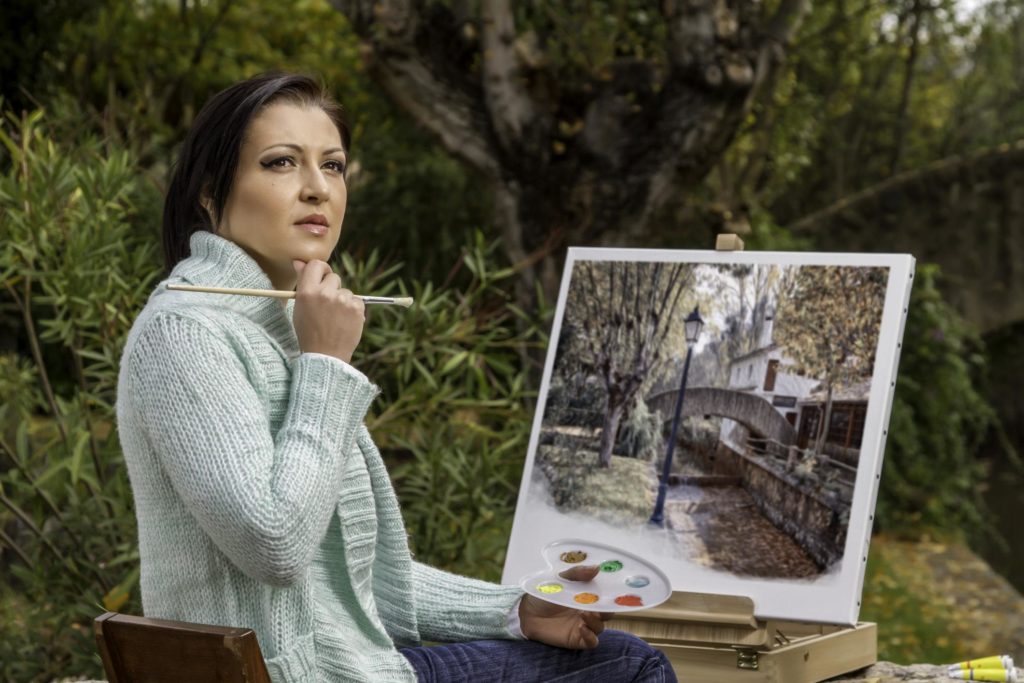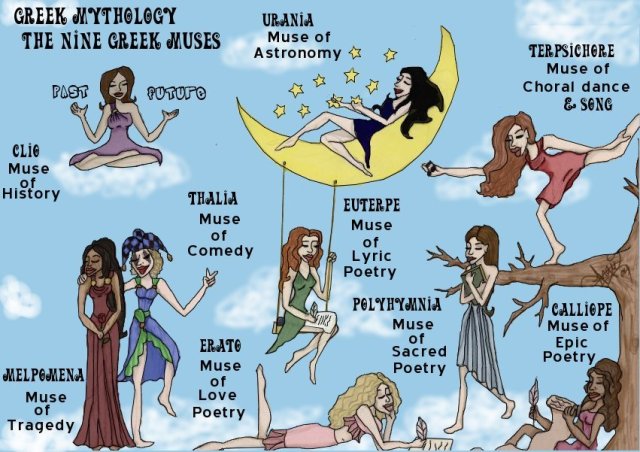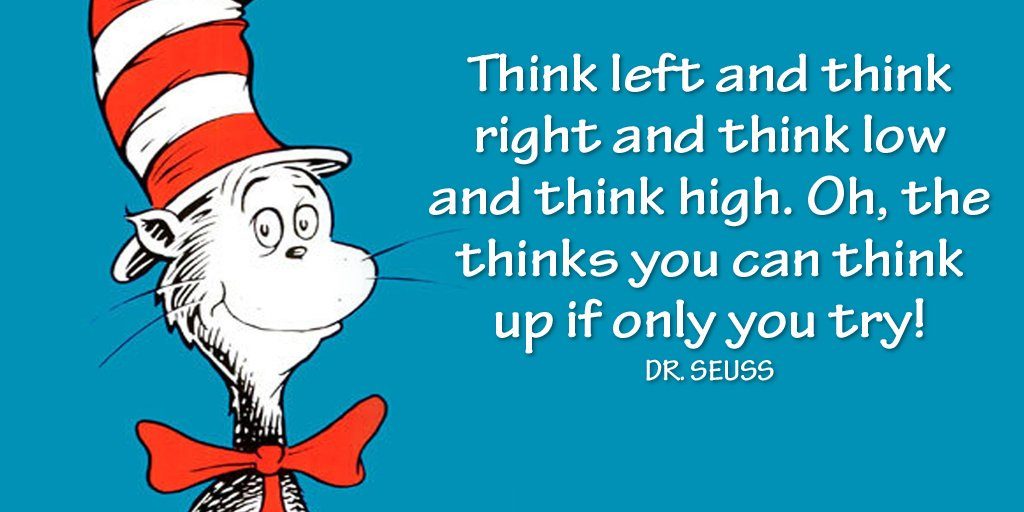
The gift of creative thinking is not limited to the lucky few. Each of us have seeds of inspiration within us that are waiting to sprout. Yet, there may be times when we feel blocked. When faced with deadlines, not being able to access our creativity can be downright frustrating. In addition to developing a routine and getting into a state of creative flow, these four simple ideas will help you jumpstart your creativity. (Estimated reading time: 5 minutes)
“Creativity is intelligence having fun.”
— Albert Einstein
The Muse is not an easy woman to woo. After all, she is a goddess.
According to Greek mythology, the Muse is the daughter of Zeus, who bestowed on her the power to inspire those she deems worthy of her magical touch. Anyone who is in search of inspiration can reach her. You don’t have to be a seasoned poet, artist, or musician to have access to the Muse. She favors anyone who shows passion and drive.
Yet, there may be times when we feel blocked, with the Muse nowhere in sight. When faced with deadlines, her elusiveness can be downright frustrating. All the coaxing in the world won’t force her to appear.
The mistake that most make at this point is trying to force themselves into a creative state by using logic and one-dimensional solutions. But this goes against the very essence of our creative nature. Our rigidity is like a dam that blocks the waves of inspiration within us.
Creativity is, most importantly, an act of trust. We have to be okay with ‘not knowing’ and embrace the messiness of the process. True creatives are deeply aware of this truth. With experience, they realize that creative expression is intuitive, nuanced, complex, and visceral.

The act of releasing control when we’re blocked is passive, but that doesn’t mean that we should rest on our laurels and do nothing. Da Vinci and Einstein were big fans of taking naps during these lulls. Steve Jobs often took ‘brainstorming walks’ to get his creative juices flowing. Walt Disney would engage in playtime with his daughters and ride his 1:8-scale steam train locomotive in his backyard.
Some don’t support this romantic notion. They don’t want to wait for inspiration to strike. Experts such as Mason Currey, author of ‘Daily Rituals – How Artists Work’, supports adding structure to a creative routine. In other words, inspiration follows when you get working. Currey says that many of the world’s great artists follow a consistent schedule. Habits and schedules work because they free our minds to progress in our passion projects.
In a 1958 interview, Ernest Hemingway said, “when I am working on a book or a story I write every morning as soon after first light as possible. There is no one to disturb you and it is cool or cold and you come to your work and warm as you write.”
In an 1888 letter from Vincent Van Gogh to his brother, he wrote, “today again from seven o’clock in the morning till six in the evening I worked without stirring except to take some food a step or two away. Our days pass in working, working all the time, in the evening we are dead beat and go off to the café, and after that, early to bed! Such is our life.”

Even though the end product of an artistic endeavor can inspire awe, beauty, and wonder, the work that it took to get there is far from glamorous. Artists and scientists admit that they lead lives full of banal routine. Some of the habits that they typically follow include getting plenty of sleep, a daily routine of walking, consuming caffeine, and healthy meals.
In addition to developing a routine and getting into a state of creative flow, you can use these four simple ideas to jumpstart your creativity:
1. Stream of consciousness writing and drawing: Stream of consciousness is a narrative writing technique that’s unstructured and unedited. It allows writing to flow freely, jumping from one sensation, observation, and thought to the next without the usual transitions. It allows us to capture feelings and thoughts embedded in our subconscious mind. If you prefer to draw, you can create sketches and doodle whatever comes to mind. Drawing is an effective technique if you want to emote or give form to abstract concepts that can’t be captured in words.
2. Understand your creative type: We all have different creative styles. There is no one-size-fits-all approach when it comes to how we process things. Each one of us has a unique set of perspectives, talents, motivations, and ways of relating to others that influence our core personalities. For example, some people thrive under the pressure of deadlines, while others prefer to plan their work in advance. You can find your creative type by taking this quiz. Knowing your creative type will give you the insight to create conditions that are conducive to your inspiration.
3. Adopt a funnel approach in creative thinking: When you begin brainstorming, you want to stay wide open to inspiration. The initial period should be open-ended, where you allow your mind to wander and dream. When you’re unfocused and loose, you allow ideas to associate themselves with emotions and thoughts, and subsequently, create connections. If you put pressure on yourself in the initial stages, you’ll limit the associative power of the mind and feel blocked. Know that you can tighten up ideas later on when you are ready to ground them in reality.
4. Let your curiosity lead the way: If there is a specific topic that you’re curious about, go ahead and explore it – read an article or book, listen to a podcast, or watch a YouTube video. Writer Elizabeth Gilbert says, “the trick is to just follow your small moments of curiosity. For me, a lifetime devoted to creativity is nothing but a scavenger hunt — where each successive clue is another tiny little hit of curiosity. Pick each one up, unfold it, see where it leads you next.”
The gift of creative thinking is not relegated to the lucky few. Each of us have seeds of inspiration within us that are waiting to sprout. Nourish them with love and passion. Water them with persistent efforts and determined action, and eventually, you’ll see them bloom and flourish.
All my best on your journey,
Seline

Reflection Question: Do you have any other creative tools and techniques that you use? How does it help you get into a creative state of mind?
Did you like this post? Sign up below and I’ll send you more awesome posts like this every week.

That was a cool test and it got me pretty accurate I think!
“The world is a place of beauty and magic in the eyes of a DREAMER. Where others see facts and figures, you see symbols, metaphors, and hidden meanings. You’re deeply emotional and intuitive, with a vivid imagination—the quintessential idealist and romantic. The inner world is always where you’ve felt most at home. You’re happy to roam your mental landscape of thoughts, emotions, and fantasies for hours on end. You’re naturally drawn to express your inner world through literary pursuits, music, and the visual arts.”
I am a writer and painter so yes this fits me pretty well and I am very much not the literal-minded person in groups most of the time!
I took that too and got the same result! Pretty accurate for me, especially the romantic ad emotionally intuned part. That has been me for basically all of my life, even as a child growing up! I am now a mother and an author so I find ways to use these skills and influences each and every day in my life.